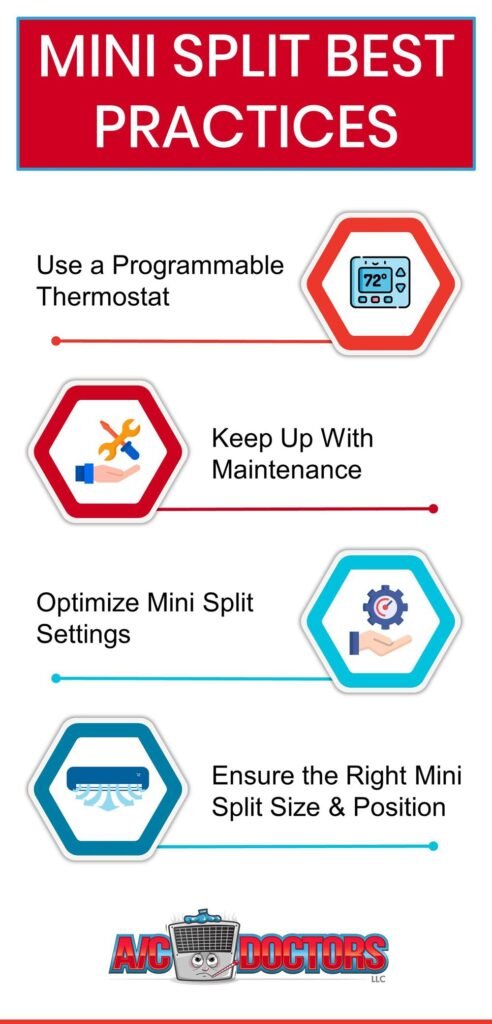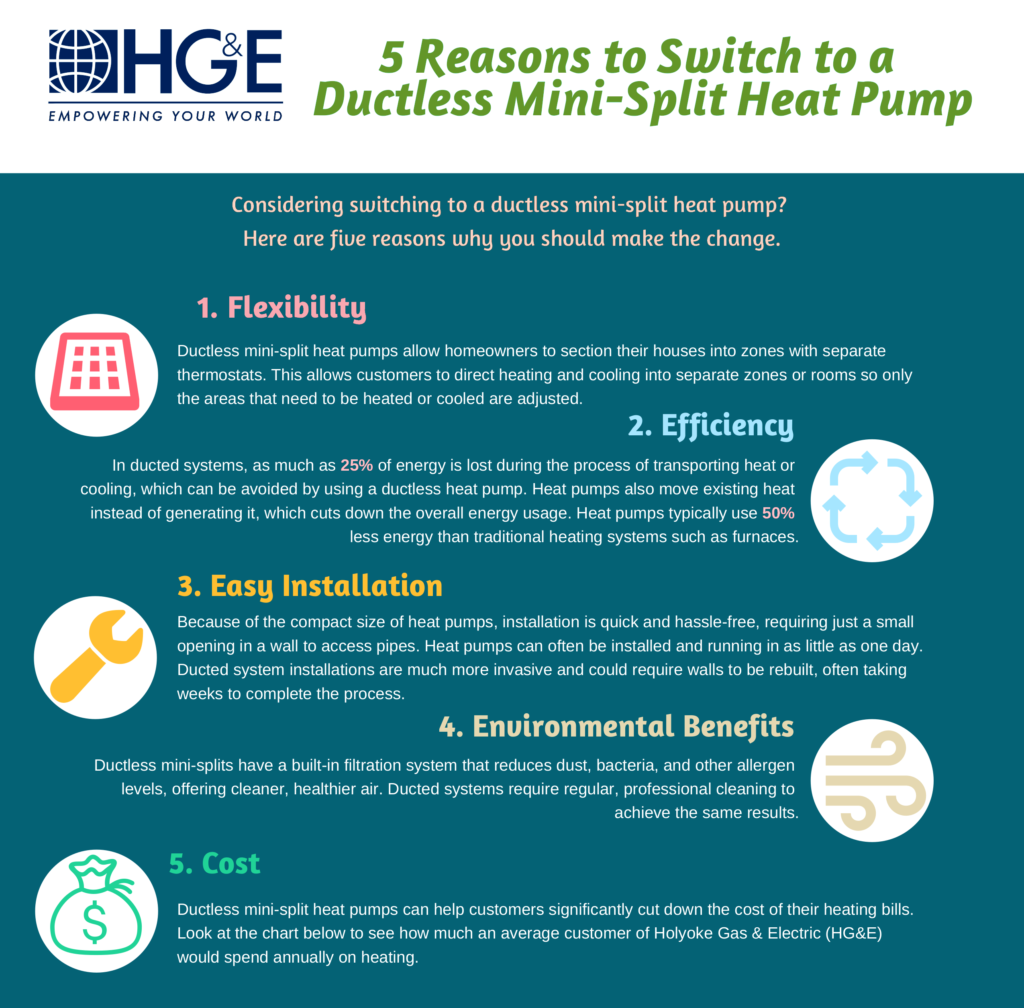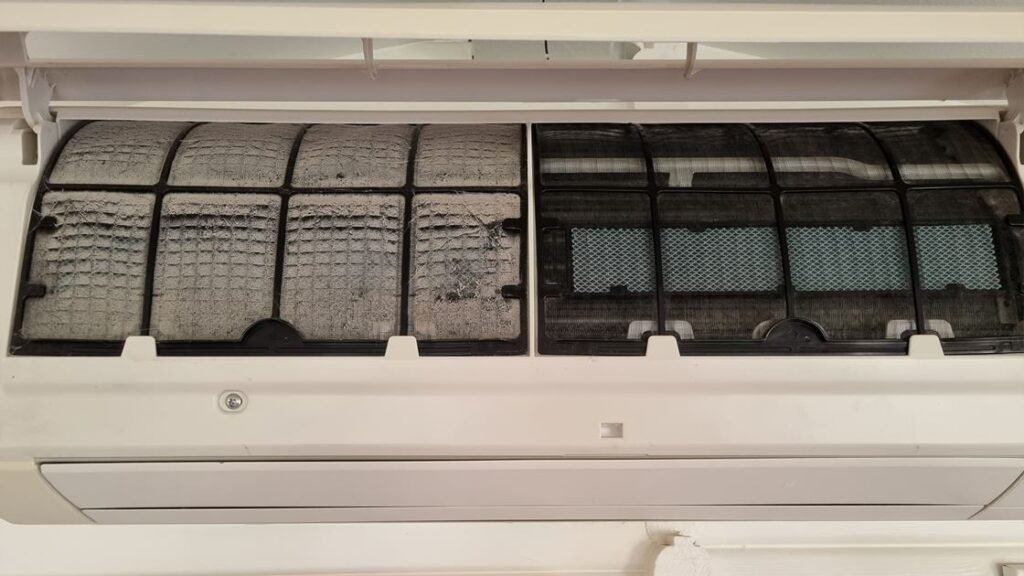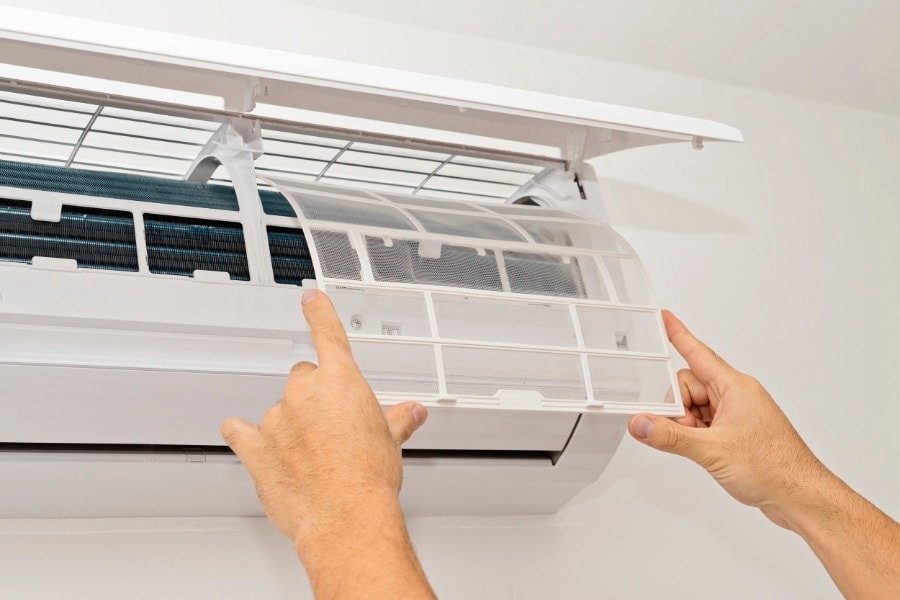Maintaining your mini split heat pump is essential for its longevity and efficiency. In this article, you will discover the best practices to keep your mini split heat pump running smoothly, ensuring that you stay comfortable and save money on energy bills. From cleaning the filters regularly to checking for any leaks or unusual noises, following these simple steps will help your mini split heat pump perform at its best for years to come. So, let’s dive into these maintenance tips and ensure a well-functioning and reliable system for your heating and cooling needs.

Regular Cleaning
Regular cleaning is essential to keep your mini split heat pump functioning at its best. The two main areas that require cleaning are the filters and the outdoor unit.
Cleaning the Filters
The filters in your mini split heat pump play a crucial role in trapping dust, dirt, and other particles from entering your indoor space. Over time, these filters can become clogged and hinder the performance of your heat pump. Therefore, it is important to clean them regularly.
To clean the filters, start by turning off the heat pump. Locate the filters on the indoor unit, usually behind a panel. Remove the panel and carefully take out the filters. Vacuum or gently brush away any accumulated dirt and debris. If the filters are washable, you can rinse them with water and mild detergent. Allow them to dry completely before putting them back into the unit.
Regularly cleaning the filters not only improves the efficiency of your mini split heat pump but also ensures cleaner air circulation in your home.
Cleaning the Outdoor Unit
The outdoor unit of your mini split heat pump is exposed to various elements, such as dust, leaves, and debris. These can accumulate on the unit’s coils and reduce its efficiency. Therefore, it is important to clean the outdoor unit as part of your regular maintenance routine.
Before you start cleaning the outdoor unit, make sure to turn off the power supply to avoid any accidents. Using a soft brush or a vacuum cleaner with a soft brush attachment, gently remove any dirt or debris from the unit. Be careful not to bend or damage the delicate fins of the coils.
If you notice any stubborn dirt or grime, you can use a mild detergent and water solution to gently scrub the affected areas. Rinse off the solution thoroughly with water and allow the unit to dry completely before turning the power supply back on.
By regularly cleaning the outdoor unit, you can ensure that your mini split heat pump operates at its maximum efficiency and prolong its lifespan.
Monitoring Performance
In addition to regular cleaning, monitoring the performance of your mini split heat pump is crucial to ensure its optimal functionality. Here are two important aspects to keep an eye on:
Checking for Unusual Noises
A well-functioning mini split heat pump should operate quietly, with minimal noise. If you notice any unusual or loud noises coming from your unit, it may indicate a problem that requires attention.
Common noises to watch out for include grinding, clanking, or squealing sounds. These could be signs of loose components, faulty motors, or worn-out bearings. If you detect any of these noises, it is recommended to contact a professional technician to diagnose and resolve the issue.
Ensuring Proper Airflow
Proper airflow is essential for the efficient operation of your mini split heat pump. Inadequate airflow can lead to reduced heating or cooling performance and can put extra strain on the system.
To ensure proper airflow, regularly check the vents and air registers in your home. Make sure they are clean and not blocked by furniture or other objects. Additionally, inspect the indoor unit to ensure that there are no obstructions around it that may impede the airflow.
If you notice a significant decrease in airflow or find any blockages, it is advisable to clean or remove the obstructions. If the issue persists, consult a professional technician to identify and rectify any underlying problems.
Inspecting Components
Regular inspection of the various components of your mini split heat pump is essential to catch any potential issues before they escalate. Here are two important components to examine:
Examining the Refrigerant Lines
The refrigerant lines in your mini split heat pump carry out the crucial task of transferring heat between the indoor and outdoor units. It is important to inspect these lines for any signs of damage or leaks.
Start by visually examining the refrigerant lines to check for any visible cracks, holes, or corrosion. Additionally, pay attention to any oil stains or refrigerant leaks around the lines. These could indicate a refrigerant leak, which requires professional attention.
If you suspect any issues with the refrigerant lines, it is best to contact a qualified technician to assess and repair the problem. Handling refrigerant can be dangerous, so it is important to leave this task to the experts.
Checking the Electrical Connections
The electrical connections of your mini split heat pump are crucial for proper functioning. Over time, these connections may loosen or develop wear and tear, which can lead to electrical issues or component failures.
Regularly inspect the electrical connections of your mini split heat pump to ensure they are secure and free from signs of damage. Look out for loose wires, frayed insulation, or burnt connectors. If you notice any problems, it is advisable to contact an HVAC professional to address the issue and make any necessary repairs.
By regularly inspecting these components, you can prevent potential problems and ensure the safe and efficient operation of your mini split heat pump.
Maintaining the Coils
The coils in your mini split heat pump are integral to its heat transfer process. Over time, these coils can accumulate dirt, dust, and debris, which can hinder the pump’s efficiency. Therefore, it is important to maintain and clean the coils regularly.
Cleaning the Evaporator Coil
The evaporator coil is located in the indoor unit and is responsible for absorbing heat from the indoor air. As air passes over the coil, moisture in the air condenses on the coil, which can lead to the accumulation of dirt and dust.
To clean the evaporator coil, start by turning off the heat pump and disconnecting the power supply. Open the panel that houses the coil and gently brush away any visible dirt or debris. You can also use a soft brush attachment on a vacuum cleaner to remove loose particles.
For stubborn dirt or grime, you can create a mild detergent and water solution and use a soft cloth to gently wipe the coil. Avoid using harsh chemicals or abrasive materials, as these can damage the coil’s delicate fins.
Once the cleaning is complete, make sure the coil is completely dry before closing the panel and turning the power supply back on.
Cleaning the Condenser Coil
The condenser coil is located in the outdoor unit and plays a crucial role in releasing the absorbed heat to the outside air. As the outdoor unit is exposed to various elements, the condenser coil can accumulate dirt, leaves, and debris.
To clean the condenser coil, start by turning off the power supply to the outdoor unit. Gently brush or vacuum away any visible dirt, leaves, or debris from the coil. Avoid using excessive force to prevent bending or damaging the fins.
If you notice any stubborn dirt or grime, you can use a mild detergent and water solution to gently scrub the affected areas. Rinse off the solution thoroughly with water and allow the coil to dry completely before turning the power supply back on.
Regularly cleaning the evaporator and condenser coils will improve the heat transfer efficiency of your mini split heat pump and maintain its optimal performance.

Managing the Drainage System
The drainage system in your mini split heat pump is responsible for removing the condensate, which is produced during the cooling process. Regular maintenance of the drainage system is important to prevent clogs and potential water damage. Here are two aspects to consider:
Clearing the Condensate Drain
The condensate drain is designed to carry the excess moisture away from the indoor unit and out of your home. Over time, this drain can become clogged with dirt, algae, or debris, leading to water backup and potential damage.
To clear the condensate drain, start by locating the drain pipe or hose. It is usually connected to the indoor unit and can be found either inside or outside your home. Using a small brush or a pipe cleaner, gently remove any visible dirt or debris from the drain.
To prevent future clogs, you can also pour a mixture of water and vinegar down the drain. This helps in clearing any residue or build-up in the drain.
Regularly clearing the condensate drain will ensure proper drainage and prevent potential water-related issues.
Checking for Leaks in the Drainage Pipe
In addition to clearing the condensate drain, it is important to check for any leaks in the drainage pipe. Over time, the pipe can develop cracks, loose connections, or damage, which can lead to water leakage.
Inspect the drainage pipe for any visible signs of leaks, such as water stains, dampness, or dripping. If you notice any leaks, it is important to address them promptly to prevent further damage. You can use pipe sealant or replace damaged sections of the pipe to fix the leaks.
Regularly checking for leaks in the drainage pipe will ensure the efficient functioning of your mini split heat pump and prevent potential water damage to your home.
Adjusting Thermostat Settings
Properly adjusting the thermostat settings of your mini split heat pump is important to maximize energy efficiency and comfort. Here are two key factors to consider:
Setting Appropriate Temperature and Fan Speed
Setting the appropriate temperature and fan speed on your mini split heat pump helps in ensuring optimal comfort while minimizing energy consumption. The ideal temperature setting varies depending on the season and personal preferences.
During the cooling season, it is recommended to set the thermostat to a temperature that is comfortable for you, but not too low. This helps in reducing energy usage and preventing the unit from overworking. Similarly, during the heating season, setting the thermostat to a moderate temperature helps in achieving a comfortable indoor environment without excessive energy consumption.
Additionally, adjusting the fan speed can further enhance energy efficiency. Lower fan speeds typically consume less energy, while higher speeds provide faster heating or cooling. Consider your comfort needs and energy-saving goals when selecting the appropriate fan speed.
Using Programmable Settings
Many mini split heat pumps come with programmable features that allow you to set specific temperature and fan speed schedules. Take advantage of these settings to optimize energy usage and comfort.
Programmable settings enable you to adjust temperature and fan speed settings based on your schedule. For example, you can set the heat pump to lower the temperature or reduce fan speed when you are away from home or asleep. This ensures energy efficiency without sacrificing comfort.
By adjusting thermostat settings and utilizing programmable features, you can enhance the energy efficiency of your mini split heat pump and create a comfortable indoor environment.

Preventing Air Leaks
Preventing air leaks in your mini split heat pump system helps in maximizing its efficiency and maintaining a comfortable indoor environment. Here are two areas to focus on:
Sealing Gaps Around the Indoor Unit
Gaps or openings around the indoor unit of your mini split heat pump can lead to air leaks, reducing its performance and energy efficiency. Therefore, it is important to seal any gaps or openings to prevent unwanted air infiltration.
Inspect the area around the indoor unit and check for any gaps or spaces between the unit and the wall. These gaps can be sealed using weatherstripping or caulking. Ensure that the seal is tight and secure, minimizing any chance of air leaks.
Regularly checking and sealing gaps around the indoor unit will help in maintaining the efficiency of your mini split heat pump and preventing unnecessary energy loss.
Insulating Exposed Pipes
Exposed pipes that connect the indoor and outdoor units of your mini split heat pump can lose heat or cool air through conduction. By insulating these pipes, you can minimize energy loss and improve the overall efficiency of your system.
Insulation sleeves or foam tape can be used to cover the exposed pipes. Ensure proper installation by wrapping the insulation tightly around the pipes and securing it with tape or fasteners. Proper insulation helps in maintaining the temperature of the refrigerant and prevents heat transfer to the surrounding environment.
Regularly inspect the insulation on the exposed pipes and replace it if damaged or deteriorated. By effectively insulating the pipes, you can optimize the energy efficiency of your mini split heat pump and enhance its performance.
Protecting from Weather Elements
Protecting your mini split heat pump from weather elements can help in prolonging its lifespan and ensuring continuous performance. Here are two ways to safeguard your unit:
Covering the Outdoor Unit During Winter
During the winter months, it is important to protect your outdoor unit from snow, ice, and other inclement weather conditions. Covering the unit can prevent potential damage and enhance its longevity.
Before covering the unit, ensure that it is clean and dry. Use a specialized outdoor unit cover that is designed to fit your specific model. The cover should be breathable and waterproof to prevent moisture build-up while still protecting the unit. Follow the manufacturer’s instructions for proper installation.
Covering the outdoor unit during the winter helps in preventing ice or snow accumulation, which can hinder its performance and cause damage. Remember to remove the cover before using the heat pump again in the spring.
Shielding the Unit from Direct Sunlight
Direct sunlight can increase the workload on your mini split heat pump and affect its efficiency. Shielding the unit from direct sunlight helps in reducing its exposure to heat, especially during the summer months.
To provide shade for the outdoor unit, you can use an awning, a pergola, or strategically placed plants or trees. Ensure that the shade does not obstruct the airflow around the unit.
By protecting your mini split heat pump from extreme weather conditions and direct sunlight, you can prolong its lifespan and maintain its optimal performance.

Schedule Professional Maintenance
While regular maintenance tasks can be done by homeowners, it is important to schedule professional maintenance for your mini split heat pump at least once a year. Hiring an HVAC technician for annual servicing offers several benefits:
Getting the Unit Inspected and Tuned-Up
An HVAC technician has the expertise and knowledge to thoroughly inspect your mini split heat pump, identifying any potential issues or areas that require attention. They can detect and resolve problems that might go unnoticed during regular maintenance.
Additionally, a professional tune-up ensures that your heat pump is operating at its peak performance. The technician can optimize settings, check refrigerant levels, and calibrate the system for maximum efficiency.
Regular professional maintenance helps in preventing major breakdowns, extends the lifespan of your mini split heat pump, and keeps it running smoothly throughout the year.
Educating Yourself
Becoming familiar with your mini split heat pump and its operation is key to maintaining its optimal performance. Here are two ways to educate yourself:
Reading the Manufacturer’s Manual
The manufacturer’s manual contains valuable information about your mini split heat pump, including installation guidelines, maintenance procedures, troubleshooting tips, and safety precautions. Take the time to read and understand the manual thoroughly.
The manual provides instructions specific to your model, ensuring that you perform the correct maintenance procedures and avoid any potentially damaging mistakes.
Researching Online Resources
The internet offers a wealth of resources to help you further educate yourself about your mini split heat pump. Online forums, articles, and videos provide valuable insights and troubleshooting tips from experienced homeowners and professionals.
Take advantage of these resources to expand your knowledge and gain a deeper understanding of your mini split heat pump. This will enable you to effectively maintain your unit and address minor issues on your own.
By educating yourself about your mini split heat pump, you become more confident in its maintenance and better equipped to ensure its long-term performance.
In conclusion, regular cleaning, monitoring performance, inspecting components, maintaining coils, managing the drainage system, adjusting thermostat settings, preventing air leaks, protecting from weather elements, scheduling professional maintenance, and educating yourself are all crucial best practices for maintaining your mini split heat pump. By following these practices, you can enhance the efficiency, prolong the lifespan, and enjoy the optimal performance of your mini split heat pump for years to come.

